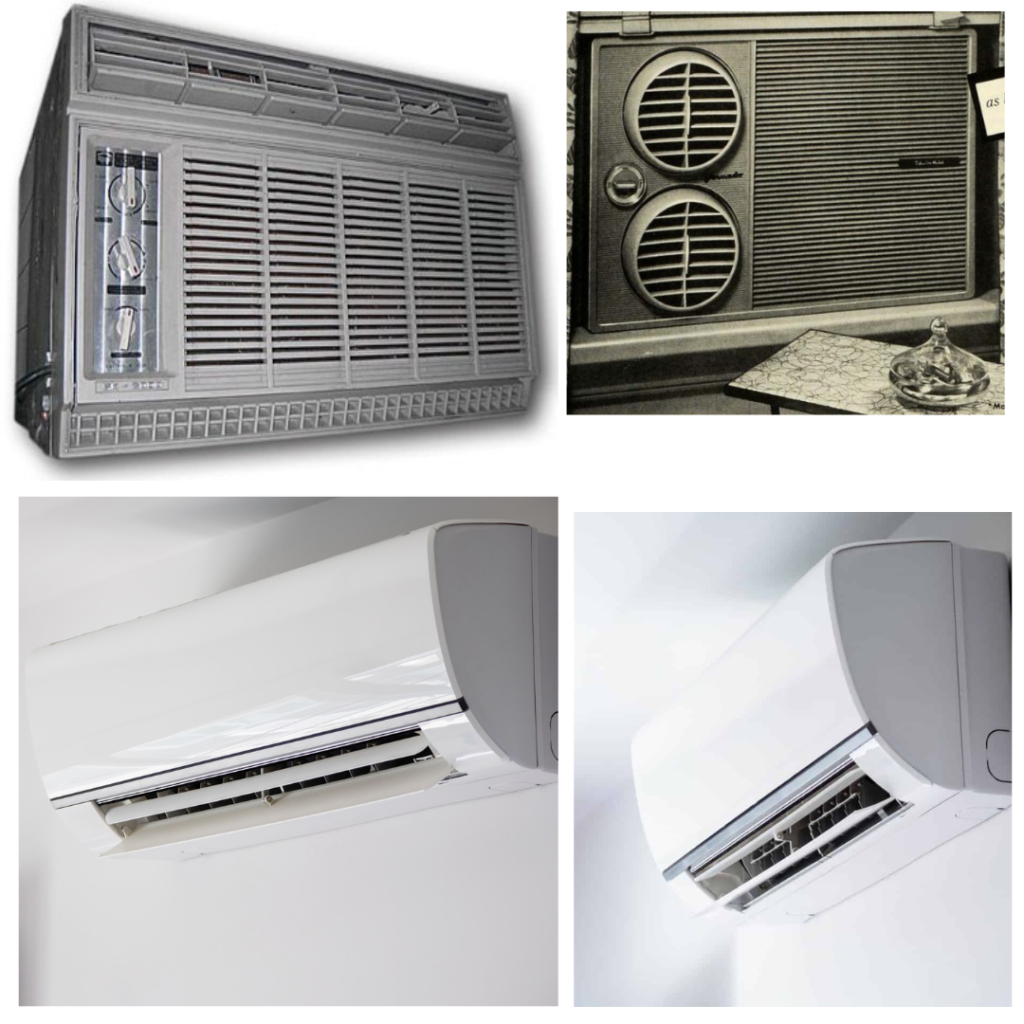Air Conditioner History

The history of air conditioning dates back to ancient civilizations, but the modern development of air conditioning systems, as we know them today, began in the 19th century. Here’s a brief overview of the key milestones in the history of air conditioning:
Early Concepts and Efforts:
- Ancient civilizations, such as the Egyptians and Romans, used various methods to cool indoor spaces, including using water evaporation and wind-driven fans.
- In the 18th century, Benjamin Franklin and John Hadley experimented with the cooling effect of evaporating liquids, laying the foundation for future developments.
Ventilation and Cooling Concepts:
- In the early 19th century, Dr. John Gorrie developed a system to cool hospital rooms using ice to reduce the temperature and humidity, contributing to improved patient comfort.
Refrigeration and Ice Machines:
- In the mid-19th century, advancements in refrigeration technology led to the development of ice-making machines, which were used to cool air in commercial spaces.
Willis Haviland Carrier:
- In 1902, Willis Haviland Carrier invented the “Apparatus for Treating Air” to control temperature and humidity at a printing plant. This invention marked the birth of modern air conditioning.
- Carrier’s system used coils to cool and dehumidify air, resulting in better print quality and improved comfort.
Early Commercial Applications:
- The early 20th century saw air conditioning applied to various commercial settings, including theaters, department stores, and office buildings, to attract customers and enhance comfort.
Residential Air Conditioning:
- After World War II, air conditioning systems became more affordable, leading to their widespread adoption in residential homes.
- Air conditioning played a significant role in the migration of people to warmer climates, contributing to population growth in regions like the American Sun Belt.
Advancements and Innovations:
- Throughout the latter half of the 20th century, advancements in refrigeration technology, design, and energy efficiency led to the development of more sophisticated and environmentally friendly air conditioning systems.
Energy Efficiency and Environmental Concerns:
- In the late 20th century, concerns about energy consumption and environmental impact prompted the development of more energy-efficient and eco-friendly air conditioning systems.
Smart and Connected Systems:
- In recent years, smart technology and connectivity have been integrated into air conditioning systems, allowing users to control and monitor their systems remotely for enhanced comfort and energy efficiency.
Continued Innovation:
- Ongoing research and development in the field of air conditioning focus on improving efficiency, reducing energy consumption, and incorporating sustainable cooling solutions.
The history of air conditioning reflects a combination of scientific discoveries, technological innovations, and the evolving needs of society for indoor comfort. Today, air conditioning is a ubiquitous feature in homes, offices, vehicles, and public spaces, providing cooling, dehumidification, and improved air quality to enhance the quality of life for people around the world.


